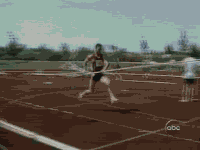
|
|
SUBSIM: The Web's #1 resource for all submarine & naval simulations since 1997
 |
SUBSIM: The Web's #1 resource for all submarine & naval simulations since 1997 |
|
|
 09-30-16, 08:49 AM
09-30-16, 08:49 AM
|
#1 |
|
Navy Seal
 |
Ah yes, the incredible advantage of constant bearing technique: you set up the shot first, THEN all you have to do is maneuver your boat into position. And that frequently can take a half hour.
It sure takes the time pressure off. You're only concerned with one thing at a time with no hurry. Personally, I still say unload as much workload on the machinery as possible. What if you print your chart on an inkjet printer and a leaking periscope seal gets the paper wet. All that beautiful color ink runs for the hills and you're looking at a blank sheet of paper. Oh, nooooooooo Mr Bill!     Yes, you're right about introducing error. However AoB error is almost always less consequential than having your aiming point behind the target. The most error free technique would be to enter speed first, AoB second, then turning on the PK just before taking the stadimeter shot. Even that will have a tiny AoB error from the delay between hitting the send AoB button and hitting the send range/bearing button. The most important thing is to have the PK on before pegging the position with the stadimeter because position and speed are the most consequential errors. A 10º difference in AoB is most often inconsequential, especially if your gyro angle is less than 20º and your angle to the track is between 70º and 120º. Part of planning an effective attack is getting in the neighborhood of 90º to the track, keeping gyro angles below 20º and shooting for a torpedo track angle of about 110º (120º for a 20 knot target. We have charts for that but they're a bit hard to comprehend). Those three factors being true, you have the most error tolerant solution possible. Errors are inevitable. Do what you can to make them inconsequential.
__________________
Sub Skipper's Bag of Tricks, Slightly Subnuclear Mk 14 & Cutie, Slightly Subnuclear Deck Gun, EZPlot 2.0, TMOPlot, TMOKeys, SH4CMS Last edited by Rockin Robbins; 09-30-16 at 09:10 AM. |

|

|
 09-30-16, 05:50 PM
09-30-16, 05:50 PM
|
#2 | ||
|
Captain
 Join Date: Aug 2009
Posts: 481
Downloads: 74
Uploads: 3
|
Quote:
Quote:
As for AOB error being the less significant error, it depends. AOB error translates to positional error over time. How significant that is depends on time, target speed, target aspect, and reading accuracy. For a simple case where you're talking about taking a reading on a typical slow merchant target 750 yards away and firing immediately, it absolutely does not matter. If you're talking about taking a reading on a fast target, waiting 5 minutes to fire, and a 3 minute run time, it matters a hell of a lot more. If attacking from a track angle of about 100 degrees, it matters a lot less than it does when attacking from a track angle of 50 degrees. Especially if it results in the PK adjusting the AOB in a manner that makes the track angle too sharp. Since I feel pretty strongly that you should be, at a minimum, taking a second reading, if for no other reason than to verify your firing solution, I think the difference is largely academic and doesn't even actually matter in the real world. Also, this may come as a shock, but I don't tend to keep important printed documents underneath my leaky periscope. I store them properly in a water resistant container. I fully understand that having something absorbent underneath your periscope is conducive to good health, but I would recommend you use a towel or an old T-shirt or something instead.
__________________
My SH4 LP |
||

|

|
 |
| Tags |
| aob, missing, targeting, tdc, tmo |
|
|
